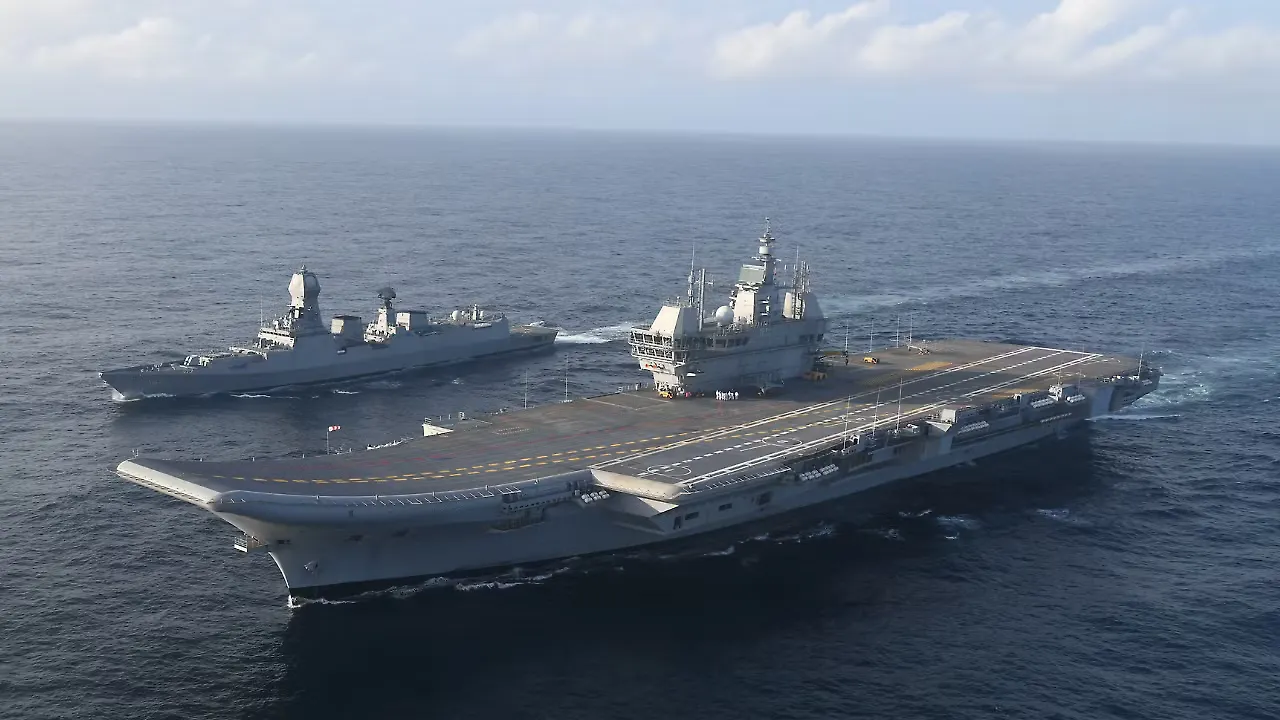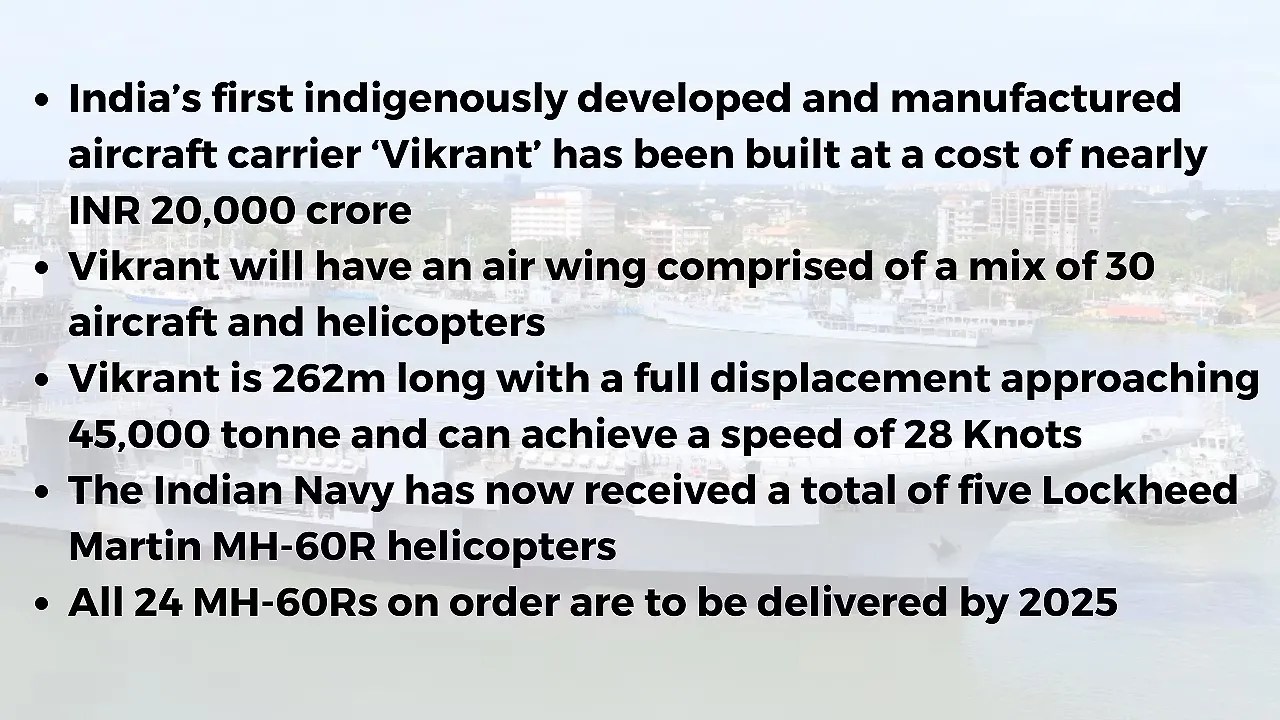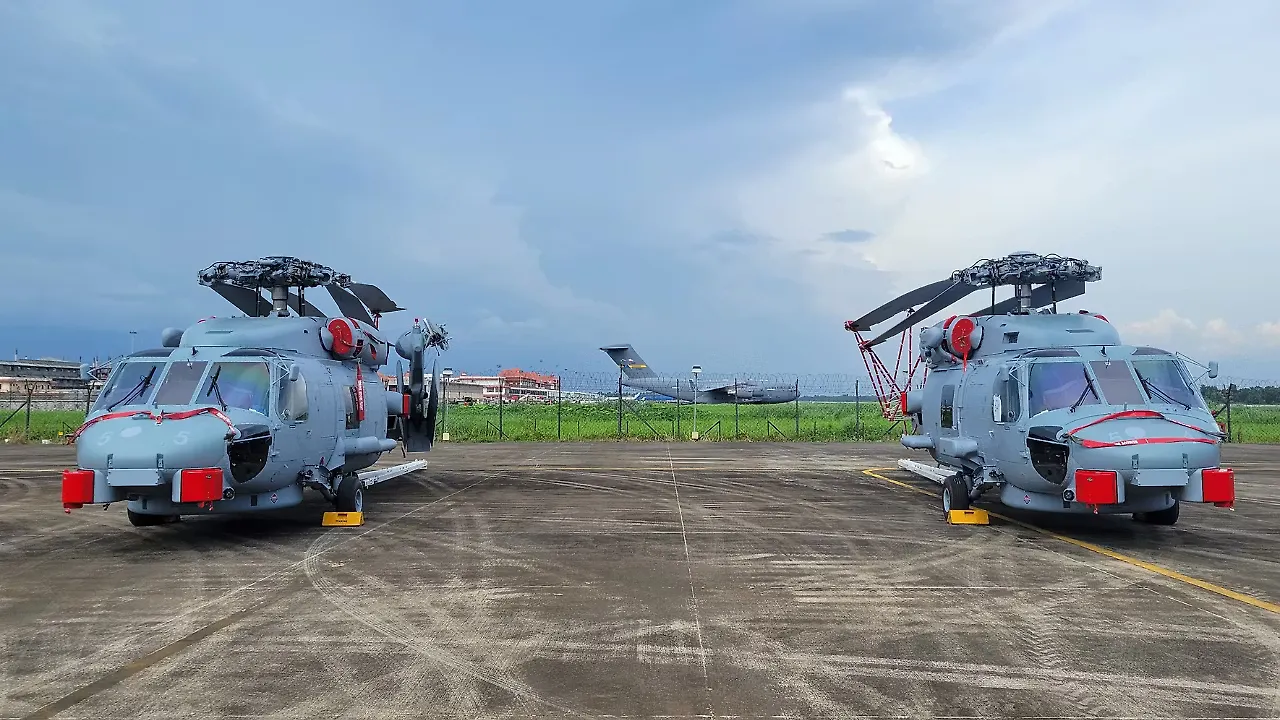
The simultaneous delivery of the first Indigenous Aircraft Carrier (IAC) ‘Vikrant’ and two American-built Sikorsky MH-60R Anti-Submarine and Anti-Surface Warfare (ASW/ASuW) helicopters on July 28 marked the rare occurrence of two advanced military platforms being delivered to the Indian Navy on the same date. The delivery of the aircraft carrier Vikrant will provide a much-needed boost to the Indian Navy’s power projection capabilities away from Indian shores, while the sophisticated MH-60R will aid the Navy in its ASW operations. Vikrant is christened after her illustrious predecessor, India's first aircraft carrier Indian Naval Ship (INS) Vikrant, which played a key role in the 1971 war.
Landmark Achievement
India is one of only a handful of nations that has the capability to design and manufacture an aircraft carrier indigenously. The new warship was designed by the Navy's in-house Directorate of Naval Design (DND) and built at Kochi by the Cochin Shipyard Limited (CSL), India’s largest shipyard. According to Navy officials, Vikrant has been built with a high degree of automation for machinery operation, ship navigation and survivability and has been designed to accommodate an assortment of fixed wing and rotary aircraft. The indigenously developed aircraft carrier has been designed to cater for the Navy’s Short Take-Off but Arrested Landing (STOBAR) requirement and features a ski-jump for launching aircraft along with a set of 'arrester wires' for recovery of aircraft back onboard the warship.
Vikrant costs nearly INR 20,000 crore to build, and this does not include the cost of its airborne compliment, which will consist of Russian-built MiG-29K fighter aircraft and a mix of Sea King, MH-60R, Dhruv MkIII and Ka-28/31 helicopters. The new aircraft carrier will be able to accommodate an air wing comprising 30 aircraft and helicopters, officials said. The Ministry of Defence is also soon expected to decide on a new carrier-borne fighter aircraft for the Navy, for which Boeing and Dassault Aviation are offering the F/A18 Super Hornet and Rafale M (Marine), respectively. The selected aircraft will also operate off Vikrant. To accommodate these advanced fighters and helicopters, Vikrant is 262m long and will have a full displacement approaching 45,000 tonne, which is more than double that of her famous namesake, which had a full displacement of approximately 20,000 tonne. The steel structure of the new aircraft carrier alone weighs 21,500 tonne. Despite her size, it can attain a maximum speed of 28 Knots.

Building For The Future
Building an aircraft carrier is a complicated and time-consuming endeavour, as evidenced by the timelines for the IAC-1 project. The MoD entered three contract phases with CSL, which were concluded in May 2007, Dec 2014, and Oct 2019. The ship's keel was laid in Feb 2009, followed by launching in Aug 2013. The Navy undertook a series of extensive user acceptance trials, which took place between August 2021 and July, during which ship's performance, including hull, main propulsion, PGD, auxiliary equipment, aviation facilities, weapon & sensors, as well as sea keeping & manoeuvring capabilities were proved satisfactory in accordance with trial protocols and system parameters. The 4th phase of sea trials which included integrated trials of major equipment and systems, including key aviation equipment, was completed in July. The acceptance documents for the aircraft carrier were signed by the Commanding Officer (Designate) of the vessel, Commodore Vidhyadhar Harke, VSM.
Many Indian firms have participated in the aircraft carrier programme, including Bharat Electronics Limited (BEL), Bharat Heavy Electricals Limited (BHEL), GRSE, Keltron, Kirloskar, Larsen & Toubro, Wartsila India, etc. The warship features an overall indigenous content level of 76%. According to the MoD, a major spin-off due to the Vikrant programme was the development and production of indigenous warship-grade steel for the ship through a partnership between the Navy, DRDO and Steel Authority of India (SAIL), which has enabled the country to become self-sufficient with respect to warship steel. Today all the warships being built in India are being manufactured using indigenous steel.
India’s newest aircraft carrier is powered by four General Electric (GE) LM2500 gas turbines, which generate 88 megawatts of power. These four LM2500 gas turbine modules were manufactured by Hindustan Aeronautics Ltd’s (HAL) Industrial & Marine Gas Turbine (IMGT) Division which is in Bengaluru. HAL has already delivered 11 LM2500 gas turbines to the Indian Navy, and amongst the warships, they have been fitted on include the P17 Frigates INS Shivalik, Satpura and Sahyadri. LM2500 engines also power the Navy’s new P17A frigates, which are being built by Mazagon Dock Shipbuilders Limited (MDL) and Garden Reach Shipbuilders and Engineers Limited (GRSE), for which it has supplied 14 engines. Each P17A frigate will be powered by two GE LM2500 marine gas turbines and two diesel engines in a Combined Diesel or Gas (CODAG) turbine configuration. More than 1,200 GE LM2500 marine gas turbines are operating with 33 navies worldwide, which have logged well in excess of 16 million hours.

Adding Teeth To ASW
The delivery of two cutting-edge, multi-mission MH-60R helicopters in July marks the renewal of the Navy’s ASW/ASuW domain capabilities on the open seas. The Navy has already received three MH 60Rs from Lockheed Martin, delivered in 2021 in the USA and are being utilised for training navy aircrew, systems operators, and maintainers. Out of the second batch of three helicopters, two were delivered on July 28th in Kochi, and the third is scheduled for delivery in August, navy officials said. In addition to undertaking ASW/ ASuW missions, India’s MH-60Rs will undertake secondary missions such as vertical replenishment, Search and Rescue (SAR) and communications relay tasks.
The advanced ASW helicopters are being procured under a US Foreign Military Sale (FMS) contract worth INR 14,000 crore for 24 MH-60Rs along with associated weapons, sensors and other equipment, which was concluded in February 2020. Lockheed Martin is slated to deliver all 24 helicopters ordered by India by 2025. In addition to India, other countries to have ordered the MH-60R are the USA, Denmark, Australia, Saudi Arabia, and South Korea.
The highly sophisticated MH-60R will allow the Indian Navy to deter, counter, and defend against any surface and sub-surface threat in the Indian Ocean Region (IOR). Operating in conjunction with the Navy’s Boeing P-8I Maritime Patrol Aircraft (MPA) and coupled with its extensive experience in ASW/ASuW operations, the induction of the MH-60R will provide a much-needed deterrent against submarine operations by adversaries in the region. The acquisition of the new ASW/ASuW helicopters is a key component of the Navy’s ‘Capability Based Perspective Plan’. The MH-60R Seahawk will replace the Navy’s ageing British-built Sea King Mk42B/C helicopters, which are overdue for replacement.